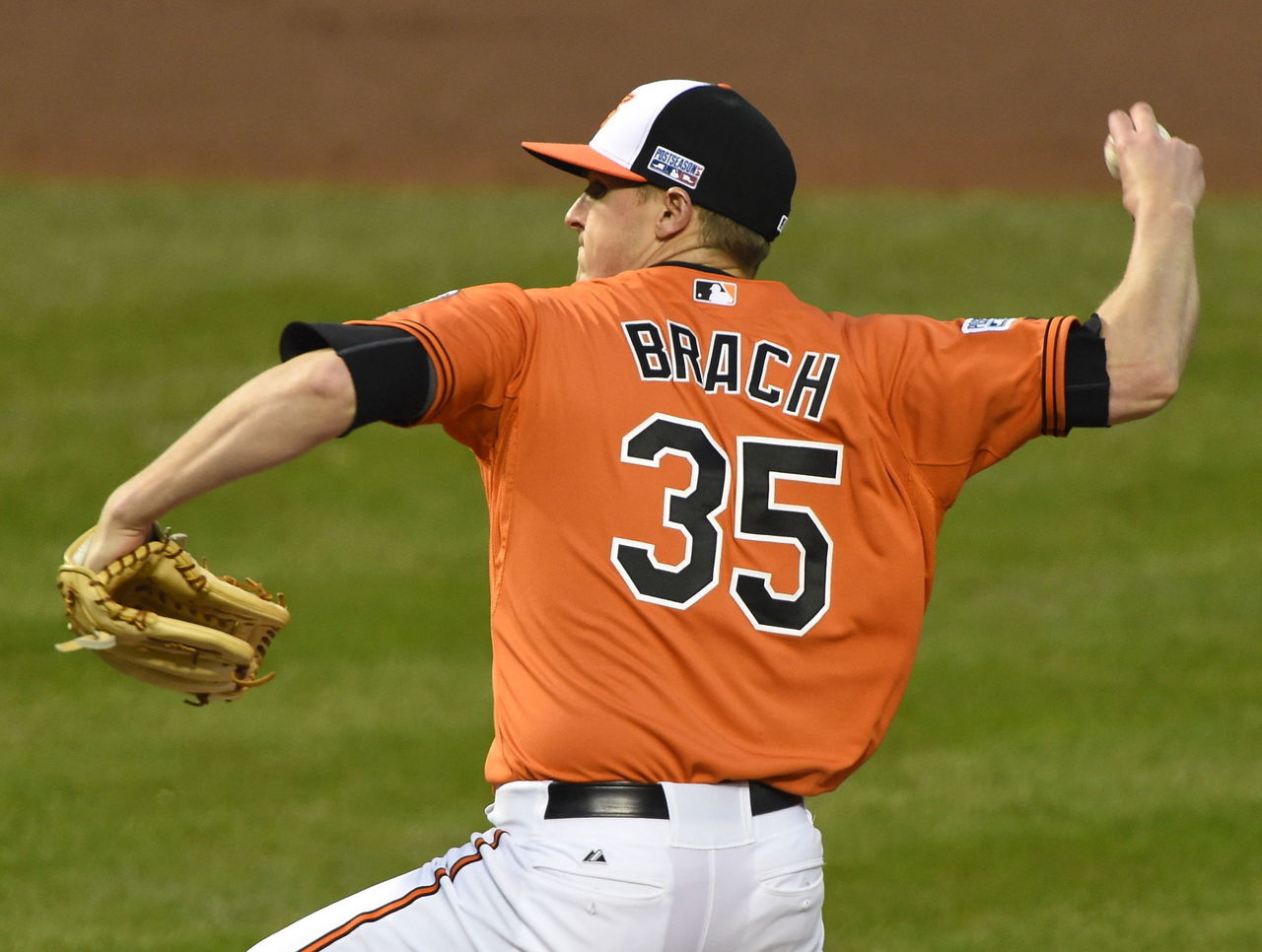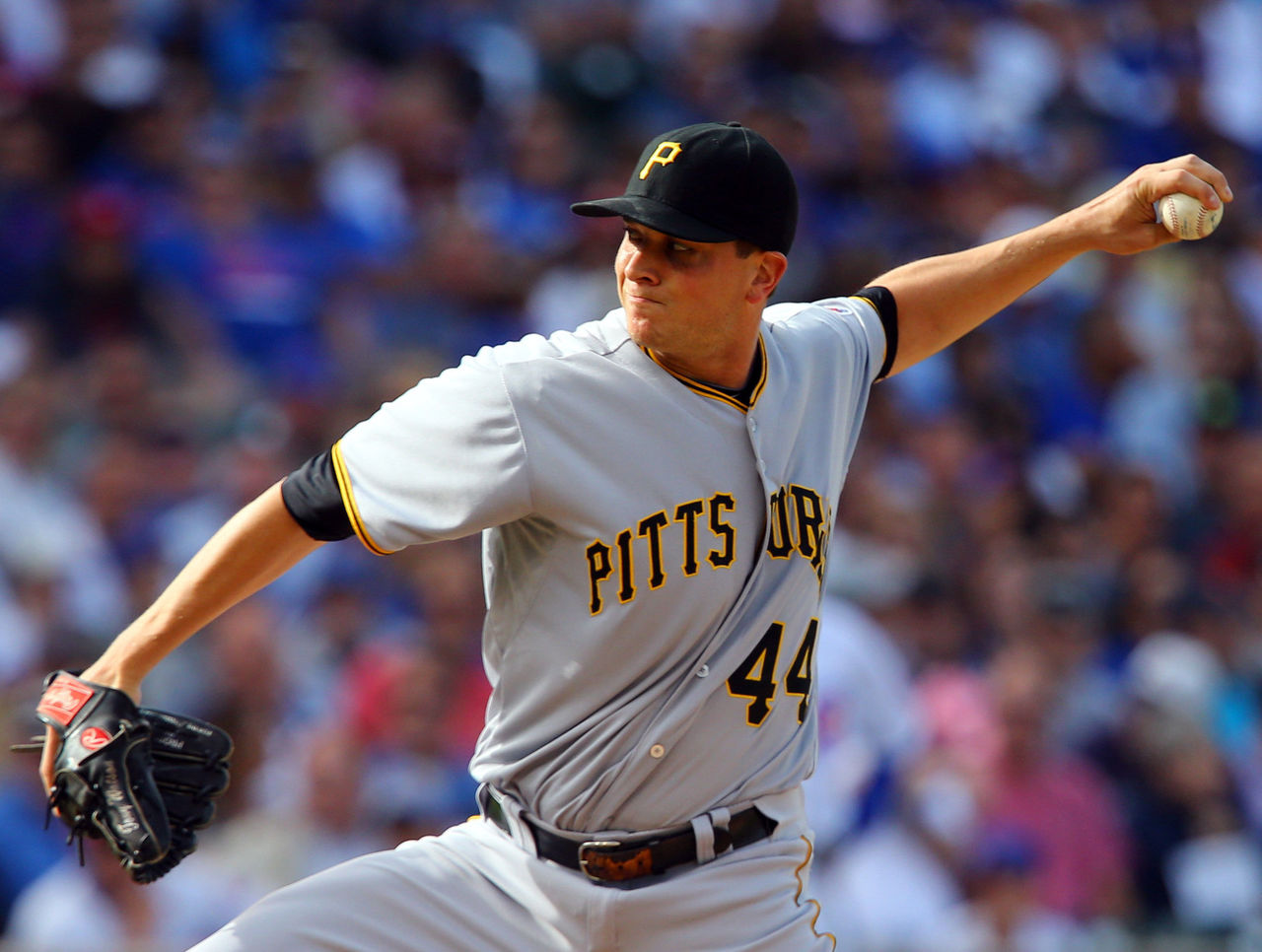Fantasy baseball roundtable - Relief pitcher edition
Follow theScore's fantasy feed on Twitter (@theScoreFantasy) for the latest news, features and more.
theScore put together a comprehensive series of rankings for each position. This week, our fantasy analysts will discuss the positions and several concerns heading into draft season.
Stud = Player expected to have a high floor (excluding the most obvious top names)
Dud = Player expected to drastically underperform ADP/or hurt a team
▲ = Player whose value will be on the rise from previous years
▼ = Player whose value will be on the decline from previous years
| EXPERT | STUD | DUD | ▲ | ▼ |
|---|---|---|---|---|
| Wilson | Wade Davis | Cody Allen | Edwin Diaz | Aroldis Chapman |
| Potter | Roberto Osuna | Kelvin Herrera | Fernando Rodney | Cody Allen |
| McLaren | Roberto Osuna | Craig Kimbrel | Francisco Rodriguez | David Robertson |
| Conrad | Jeurys Familia | Sam Dyson | Ken Giles | Francisco Rodriguez |
ADP Consensus can be found at FantasyPros.
Who will lead the majors in saves?

Jason Wilson: Win-loss record won't always dictate who winds up being the top closer. Tampa Bay Rays closer Alex Colome saved 37 games in 2016 despite the team only winning 68. I know he's not the popular choice, but I'm going with Mark Melancon with the Giants. AT&T Park is a great pitcher's park and will play to his contact-first style.
Andrew Potter: Let's not overthink this. While his first season in Boston was the worst of his sterling career, Craig Kimbrel still ended up with 31 saves. Since 2011, Kimbrel has finished third, third, first, second, sixth and 14th in saves, averaging 42 saves per season over that span. If he avoids the same knee issue that impact his 2016 campaign, he'll be right back near the top of the leaderboard.
Esten McLaren: Predicting the pitcher stats of wins and saves is often a fool's errand but the safest way to do so is to target the team expected to win the most games. This makes Chicago Cubs RHP Wade Davis my easy choice. There is the chance Chicago wins most of their games via blowout, but Davis will be there should the starters falter.
Ken Conrad: I will second the Melancon selection. Last season, no team had more blown saves than San Francisco's 30, though the club still won at least 84 games for the third straight year. Melancon has 98 saves over the last two seasons, leading baseball with 51 in 2015.
Which player unlikely to be a closer is your top fantasy option (other than Miller & Betances)?

Wilson: It has to be Miami Marlins RHP Kyle Barraclough. His BB/9 is worrisome, but he throws flaming gasoline. His fastball averaged 95.5 MPH and he missed a ton of bats, good for a 14.00 K/9. The closer's job belongs to A.J. Ramos, but Barraclough is a fantastic option to boost Ks.
Potter: I'm a Brad Brach evangelist. Over his past three seasons, the tall Orioles' righty has thrown 220 2/3 innings of 2.61 ERA baseball, striking out 9.6 batters per nine and limiting home runs -- crucial in the AL East. Darren O'Day has served as the set-up man to closer Zach Britton but Brach soundly outperformed him last season. If he Britton struggles, Brach might get a shot to close.
McLaren: Los Angeles Dodgers LHP Grant Dayton has appeared in just 26.1 MLB innings, but he struck out 39 of the 101 batters he faced. He allowed a troubling 52.8 percent flyball rate to just 26.4 percent groundball, but he did limit hitters to a hard hit rate of just 25.5 percent. The occasional solo home run won't hurt owners too much, as did walk just six batters out of 101.
Conrad: In his long-delayed debut season, Texas Rangers RHP Matt Bush maintained a 2.48 ERA and a 0.94 WHIP through 58 games and 61 2/3 innings. As a bonus, he was credited with seven wins; Texas' top-heavy rotation could see him deployed frequently with the team trailing or tied. Bush kept the ball down, holding a 1.32 GB/FB ratio and allowing just 0.58 home runs per nine innings.

Which closer is the first to lose his job?
Wilson: Atlanta Braves closer Jim Johnson saved 101 games between two seasons with the Orioles before falling apart and, apparently, being rebuilt in 2016 with the Braves. With Atlanta re-tooling, Johnson is an early-season trade candidate, but set-up man Arodys Vizcaino projects well and has done the job in the past. Vizcaino could even grab the job out of Spring Training.
Potter: Whoever leaves the Rockies' Spring Training in the closer role shouldn't bother buying new business cards; they might not last long. Greg Holland has serious recent injury history. Jake McGee had an ugly 4.73 ERA in year one with Colorado. Adam Ottavino has very little experience. All three are past the age of 30 and have to pitch home games at hitter-friendly Coors Field.
McLaren: I feel sorry for those in early fantasy baseball drafts who'll be paying the named-closer premium for Los Angeles Angels RHP Huston Street. He won't make it through Spring Training with the job. Street struck out just 5.64 batters per nine innings last year, while walking nearly the same amount. RHP Cam Bedrosian had a K/9 of 11.38 while working primarily from a setup role. He stranded nearly 90 percent of base runners.
Conrad: Longtime Pittsburgh Pirates setup man Tony Watson assumed the closer role in August, converting 15 of 20 save chances and ending the year with a 3.06 ERA. Not a big strikeout pitcher, the left-hander posted sub-2.00 ERAs in 2014 and 2015, so he may simply be more comfortable in the eighth inning. Daniel Hudson fits the bill of a more traditional power arm, and could get a chance to close if Watson falters early.

How do you approach the position in drafts?
Wilson: I typically go in expecting to wait until very late. I never want to reach for a closer, because it's really only an advantage in one category. That said, if everyone else is on a similar wavelength and reliable late-inning arms are sticking around, I'll go back-to-back on elite closers. This can jump start an arms race, which I'm already out of, and remove any need from taking another.
Potter: My strategy is to prioritize WHIP first, K-rate second, and role third. I may grab one big name closer near pick 100, but I'm usually content to go with the Moneyball approach: trust the waiver wire's scrap heap of relievers to produce a handful of cheap, high-leverage options each year. You have far more to lose by whiffing on an expensive closer than you have to gain.
McLaren: I fade anyone who has already been named a closer at draft time. I'll occasionally target another reliever with a high strikeout rate late in the drafts, but I generally fade the saves category with the intent of finding them on the waiver wire once the closer carousel begins to circulate or people separate themselves from committee situations.
Conrad: I agree with not reaching for a closer, but taking one of the top names at or around their ADP isn't a bad move since they are typically assets in rate stats as well as saves. If you're in need of a closer, and there's a good one available, take him. Don't worry about outsmarting your fellow owners or "paying for saves." If taking Kenley Jansen in the fourth or fifth round makes sense for you, then do it.
(Photos courtesy: Action Images)